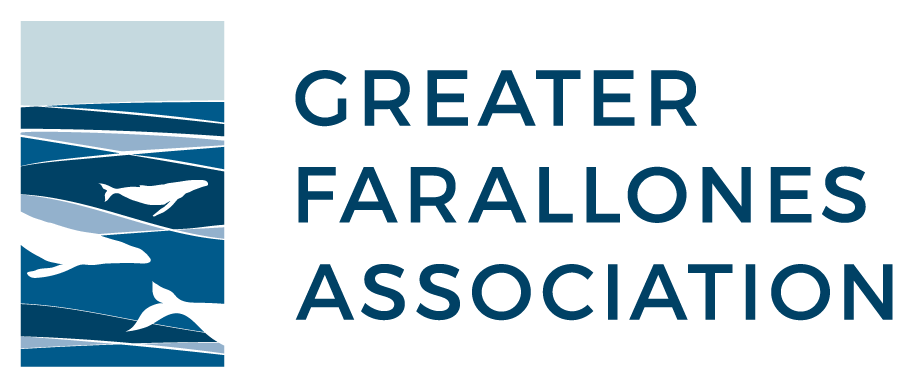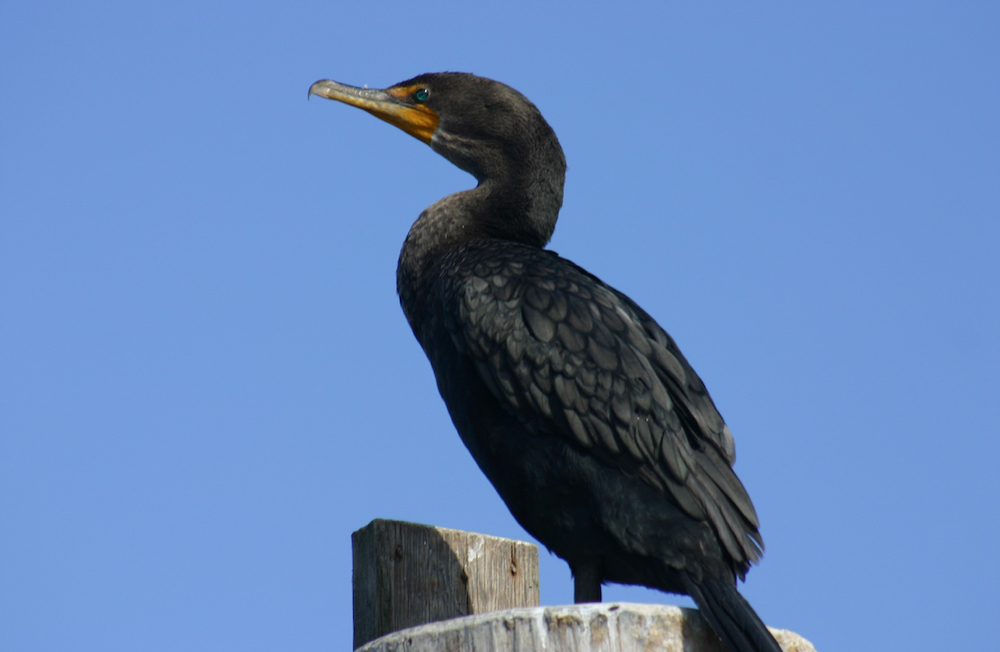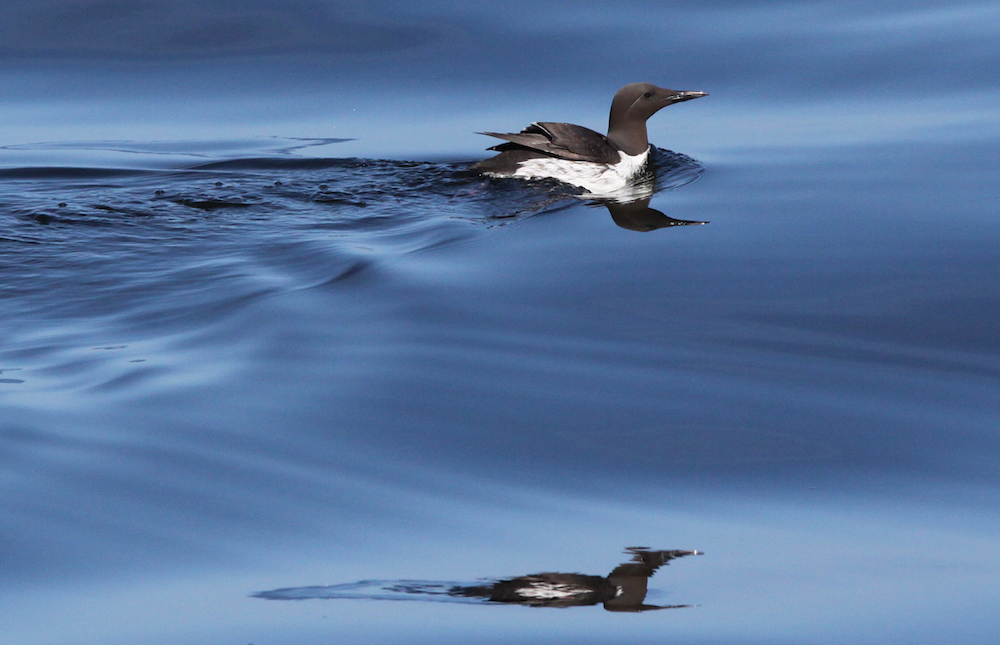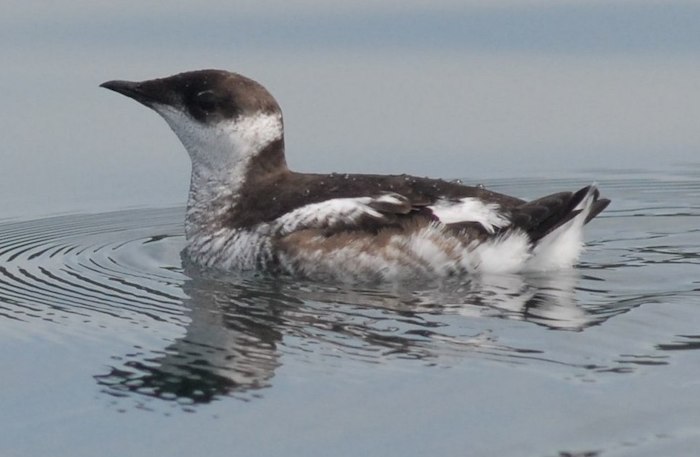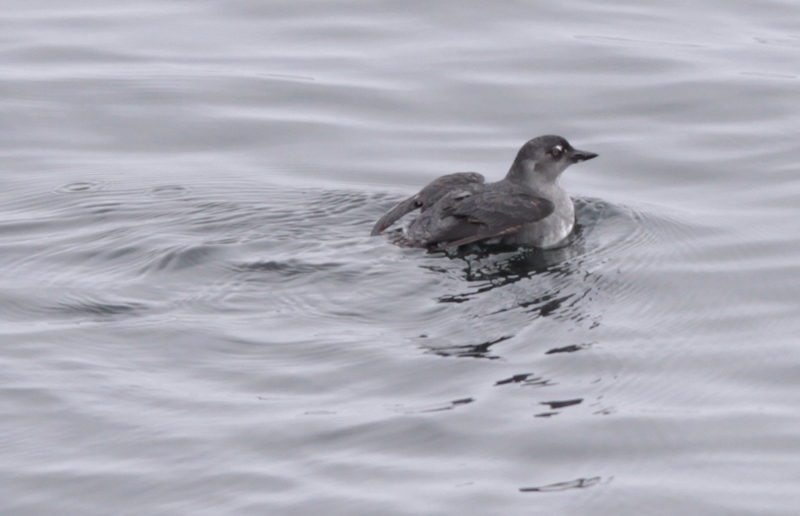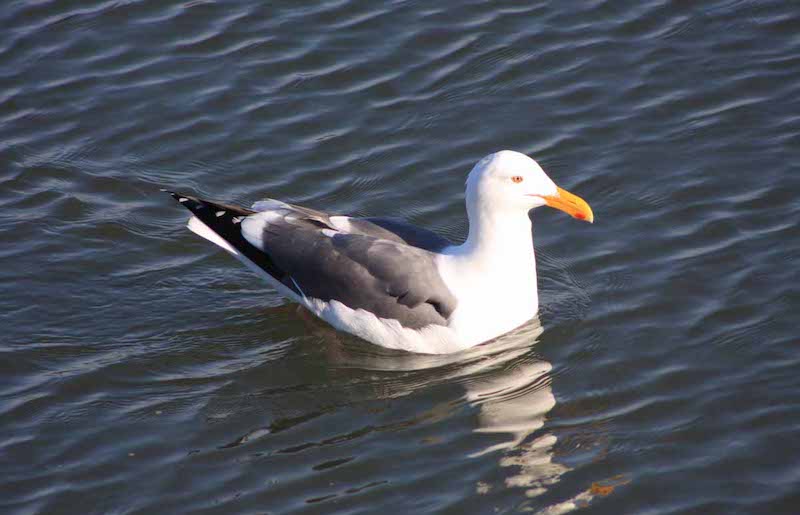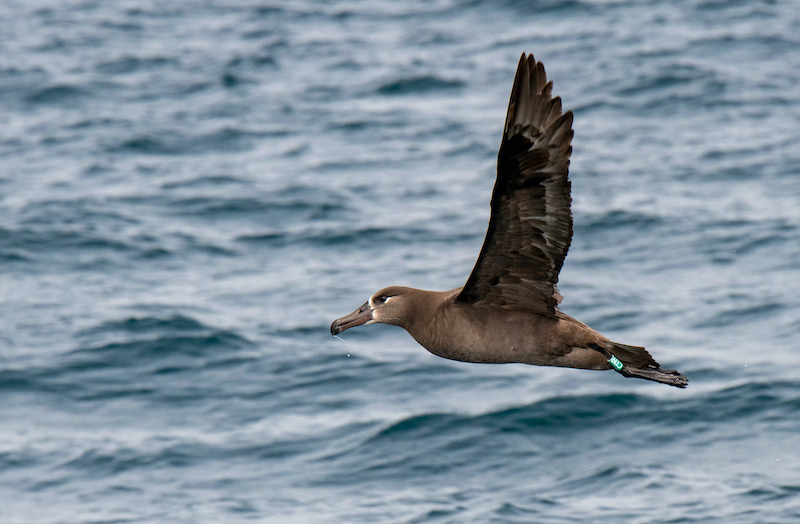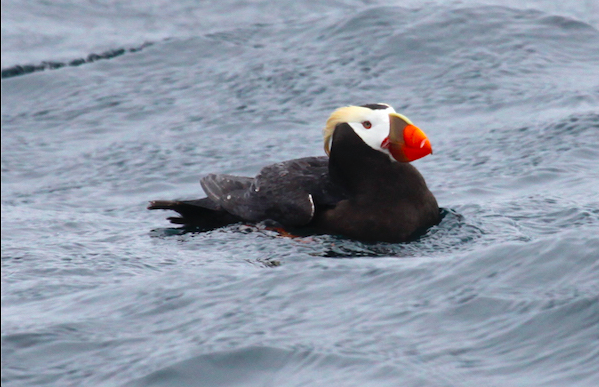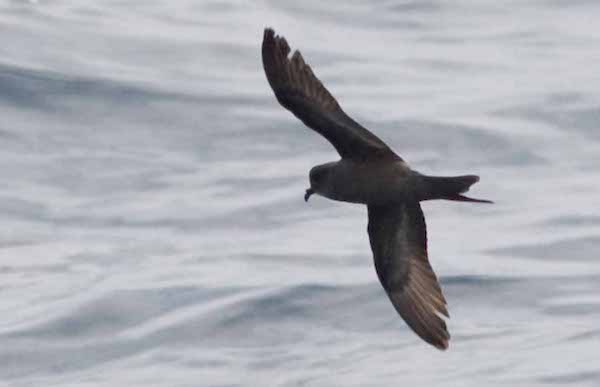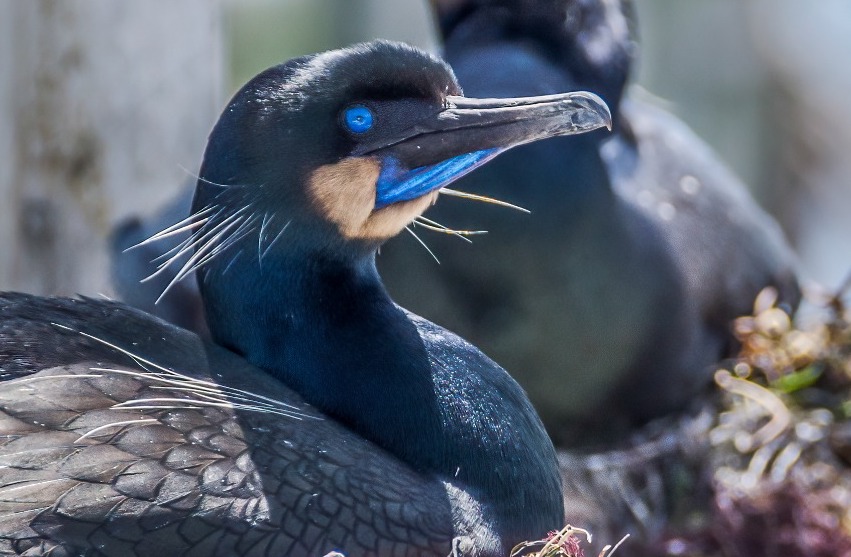
Brandt’s Cormorant (Phalacrocorax penicillatus)
The Farallon Islands are home to one of the largest Brandt’s Cormorant breeding colonies in the world and the Sanctuary is considered an extremely important habitat for these seabirds. Like many seabirds, Brandt’s Cormorants also feed in the Sanctuary, relying on the rich food sources of the upwelling current. During breeding season March-July, males show vibrant blue plumage to attract females.
Habitat: Ocean, coastal
Range: Washington to Baja California, Mexico
Avg. Size: Length: 2.8 ft; Wingspan: 4 ft
Diet: Variety of fish, shrimp, crabs
Fun Fact: The oldest recorded Brandt’s Cormorant lived to 17 years!
Photo: Douglas Croft, Douglas Croft Images
